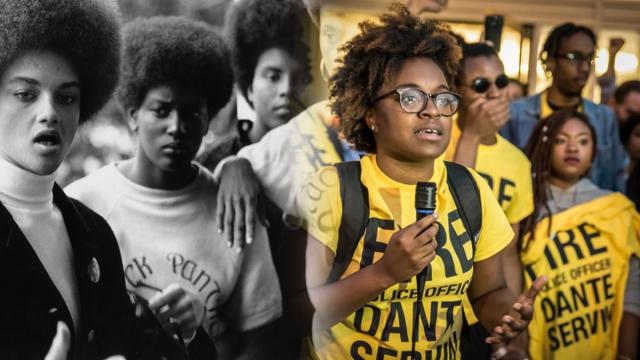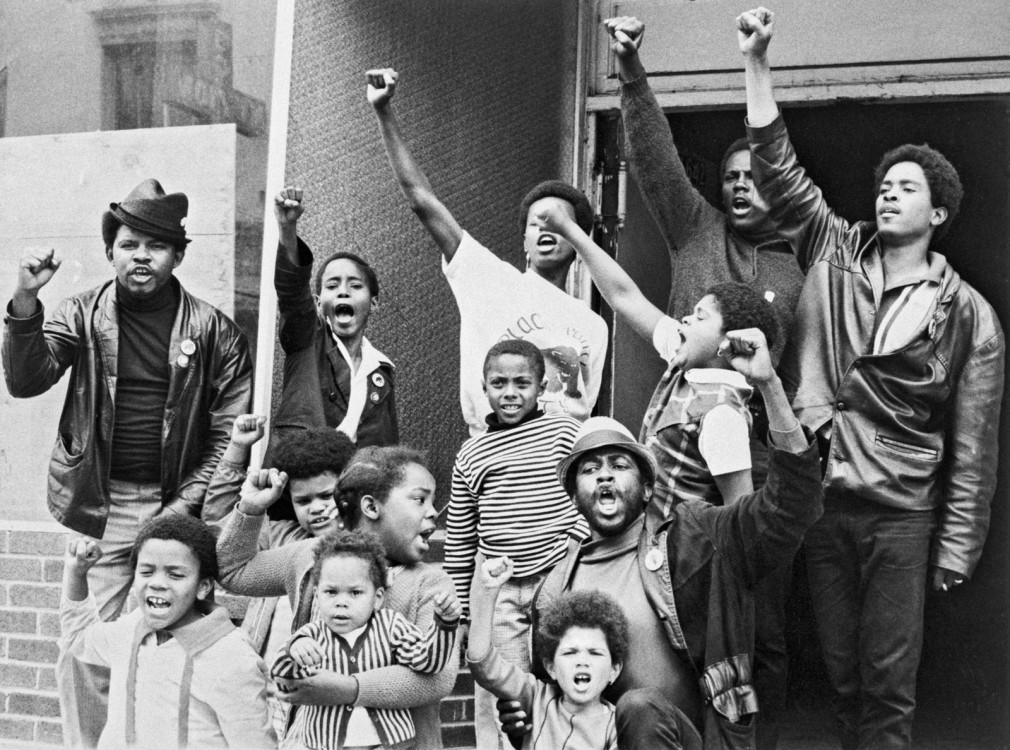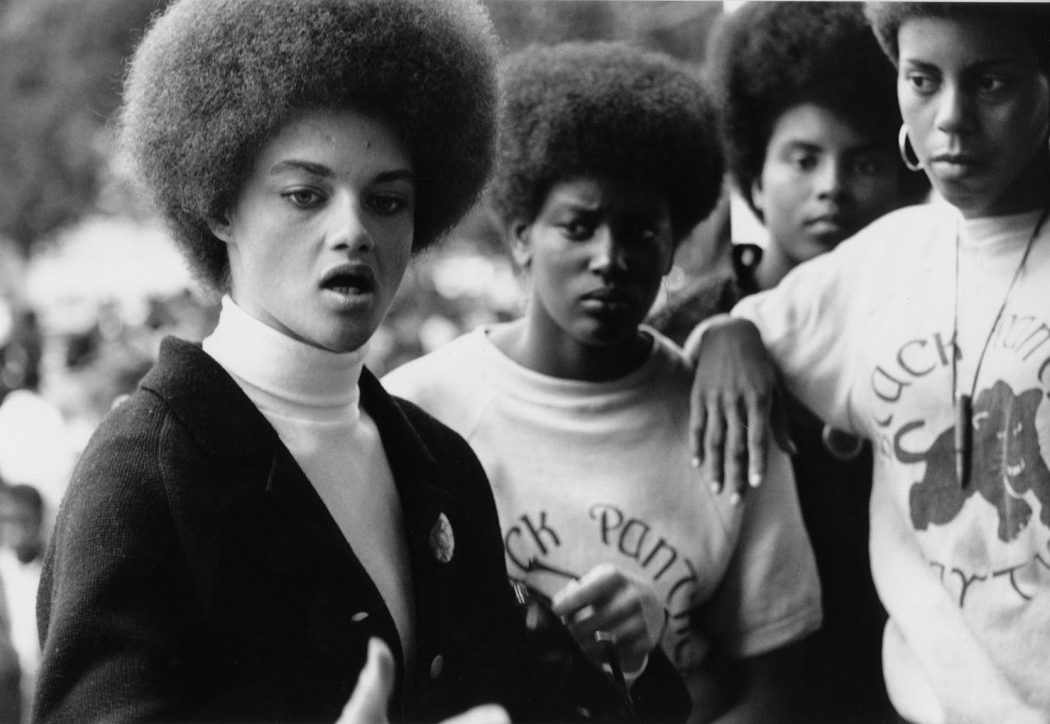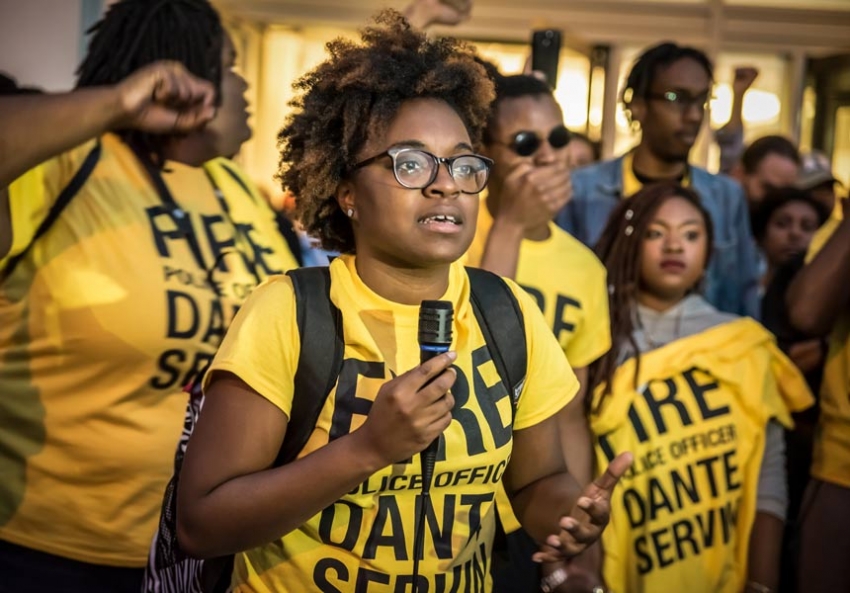
CHICAGO — In St. Louis, the Organization for Black Struggle is building a black worker center to support low wage earners.
In Chicago, activists led hunger strikes against the closing of a predominantly black high school and rallied for the creation of a Trauma Center on the South Side.
Nationwide, BYP100 and the Movement for Black Lives are individually creating economic platforms that call for the revitalization of black communities, reparations, and the protection of the rights of women and transgender people.
When scores of people took to the streets in Ferguson, Mo., in the summer of 2014 to protest the police killing of Michael Brown, they rallied around the cry that black lives mattered. Now, nearly two years later, the nationwide movement has broadened its focus to include the many ways that black lives are threatened by poverty and prejudice in the United States.
The shift to larger economic issues has taken different forms in cities across the country, as the many organizations that have united under the Black Lives Matter banner address issues unique to their hometowns.
“We’ve seen an overinvestment in policing and surveillance and a complete divestment from educational programs and communities,” says Marbre Stahly-Butts, a leader of the Movement for Black Lives, a coalition of 40 organizations nationwide. “Any change in these systems requires a change in the economic system and how money is distributed within it.”
Echoes of the Past?
For many, the broadening of the Black Lives Matter movement and its increasing focus on community empowerment echoes the evolution of the Black Power movement of the 1960s. The Black Panther Party was formed in 1966 with the goal of “policing the police.” They drove around Oakland, Calif., following squad cars and recording incidents of police violence.
A year later, the Panthers released their Ten Point Program, which called for employment and housing for black people along with an end to police brutality. They also began offering social services to black communities. The Panthers ran health care clinics, distributed clothing, and served free breakfast to inner city children.
Jamal Joseph, a young leader of the Black Panthers who is now a director, writer, and film professor at Columbia University in New York, says that such community programs were “vital to the Panthers’ work” because the Panthers recognized “that the community needed to be part of their own liberation.”
Professor Joseph sees Black Lives Matter organizers making the same recognition today.
“Similarly to what happened in the civil rights movement and in the Black liberation movement, [Black Lives Matter organizers] are connected nationally and also building consciousness and connecting the dots between what’s happening with mass incarceration and poverty and the lack of education,” says Joseph. “In other words, the movement is saying that we recognize that people are being killed by the cops, but also that people are being killed by neglect. And we want to address that. We want to address poverty, poor health care, poor education, and issues that are critical.”
In St. Louis, a Shift to Economic Issues
For Montague Simmons, the shift to broader issues of social and economic justice is a return to the grassroots work that his organization has been doing for years. The Organization for Black Struggle was founded in 1980 by a group of activists, students, and union leaders in St. Louis to fill a void left by the decline of the Black Power Movement.
On the day that Brown was killed in 2014, OBS had just finished a project surveying the community about safety. “They were really talking about the issues with the police, conditions of housing, conditions of land, and conditions of community safety,” says Mr. Simmons.
OBS’s planned work on economic equality was put on hold after Mr. Brown’s killing. The organization helped lead many of the protests against police brutality in St. Louis and Ferguson following Brown’s death and the shooting of VonDerrit Myers Jr. in October 2014.
Two years later, OBS is now revisiting the survey and working more on economic justice campaigns. This summer, they are helping establish a black worker center to provide legal support, social services, and political education and organizing to low wage earners in the St. Louis area.
“This year’s there’s a lot of energy and we’ve received support largely because of what’s happened in Ferguson to really make [the worker center] real,” says Simmons.
In Chicago, the Fight for High Schools and Hospitals
To many Chicagoans, Black Lives Matter is synonymous with the protesters who filled city streets following the release of the Laquan McDonald video last November. The video, which showed Officer Jason Van Dyke shooting 17-year-old McDonald 16 times, set off a wave of organizing that led to the firing of the city’s top cop and a restructuring of the police accountability system.
But organizers here say the fight for black lives encompasses much more than police brutality and can be traced back to decades-long campaigns for justice.
In recent months, the movement has seen several victories: After a 34-day hunger strike led by a group of 12 community members last August, Mayor Rahm Emanuel agreed to keep open a predominantly black high school on the city’s South Side. Dyett High School will now reopen in September as an arts school.
After a five-year campaign, activists also successfully lobbied for the establishment of a trauma center in a hospital on the city’s South Side last December. The area had been without a Level 1 adult trauma center for decades, meaning residents had to travel miles to get medical help for gunshot wounds and other severe injuries.
Earlier this month, Black Lives Matter Chicago launched another initiative that speaks to the broadening priorities of the movement. OurStory is a community dialogue project with the goals of promoting political education on the South Side and engaging “residents in creating solutions to public safety and violence.” Their events feature performances by poets, singers, and comedians and giveaways from local, black-owned businesses.
Policing, Prison, and Poverty
Janaé Bonsu sees a strong connection between policing, prison, and poverty. Growing up in South Carolina, she watched as two of her uncles tried to rebuild their lives after serving time in prison. One of them struggled with a drug addiction and was murdered a few months after his release. The other was able to get a job at a landscaping business and make enough money to pay for rent, she says, but because of his felony record he was unable to get an apartment. He now lives in a day hotel and suffers from depression and alcoholism.
So when members of her organization, Black Youth Project 100, started talking last year about creating an economic agenda, Ms. Bonsu saw it as a “natural extension from our commitment to end criminalization.”
While historian and author Donna Murch says she sees obvious parallels between today’s movements and the Panthers, if anything today’s movements are facing an even more difficult challenge.
“The Panthers are organizing in a time of much greater economic prosperity than now, especially for poor and working class people,” says Professor Murch, who teaches at Rutgers University in New Jersey and is the author of “Living for the City: Migration, Education and the Rise of the Black Panther Party in Oakland, California.” Today’s widening wealth disparity, along with the growth of the prison state since the 1970s, has had huge economic ramifications for African-Americans, she says.
“A third of African-American men are under a form of correctional control and this has really emerged in the last 40 years,” says Murch. “So I think the problems that people are up against today are even larger.”
In February, BYP100 released their Agenda for Black Futures, in which they propose an expansive platform that includes reparations, the creation of a workers’ bill of rights, the elimination of profit from the penal system, supporting women and trans rights, and the revitalization of black communities. A second nationwide organization – the Movement for Black Lives, of which Bonsu and Simmons are both members – is also developing a policy agenda, which is expected in the next several months.
“We’re envisioning a world where black folks have social, political, educational, and economic freedoms,” says Bonsu, who serves as the national public policy chair for Black Youth Project 100. “We knew we needed an economic platform if we are trying to build a world where black lives really do matter in theory and practice.”
3 WAYS TO SHOW YOUR SUPPORT
- Log in to post comments




















Comments
Bruce A. Dixon replied on
the Dyett HS struggle was not undertaken by BLM
At best their role in that affair was a minor one. Apparently the reporter is not grounded locally in Chicago, and since we all look kind of alike, attributes anything black people DO to the BlackLivesMatter folks. Lazy reporting.